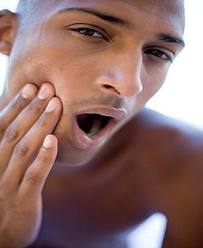Dental Mysteries – Volume 6 – Teeth Grinding
- Posted on: Jul 24 2012
Welcome to the next entry in our ongoing series of patient information columns. Our goal is to educate the reader, thereby reducing any anxiety that a patient may feel from the unknown. Today, we unveil the mystery of:
Teeth Grinding
 Do you wake up in the morning with a dull, constant headache or a sore jaw? Or worse, do you wake up in the morning on the couch after being booted out of the bedroom by your partner who can no longer stand the annoying noise? If you answer yes to these questions, you may suffer from nighttime teeth grinding or “Bruxism”.
Do you wake up in the morning with a dull, constant headache or a sore jaw? Or worse, do you wake up in the morning on the couch after being booted out of the bedroom by your partner who can no longer stand the annoying noise? If you answer yes to these questions, you may suffer from nighttime teeth grinding or “Bruxism”.
Teeth grinding can cause big problems. Chronic teeth grinding can cause broken teeth, loose teeth, or even loss of teeth. You can wear your teeth down to just stumps. Even more serious, teeth grinding can alter the function of your jaws, cause hearing loss and can cause or worsen TMD. TMD is Temporomandibular Disorder. The temporomandibular joint is the hinge joint that connects the lower jaw to the bone of the skull. The joint lies immediately in front of your ear.
Teeth grinding can be caused by stress. Stress caused bruxism can be helped by a dental appliance call a mouth guard, which protects your teeth. You should also avoid alcohol, caffeine, and gum chewing which caused your jaws muscles to get used to clenching. Relaxation exercises can also help.
At Smile Texas Dr. Bret Davis uses the Myotronics K-7 Evaluation System to accurately predict the optimal position for a patient’s jaw. This position is then achieved by restoring worn, damaged or missing teeth using porcelain veneers, porcelain crowns, and dental implants if necessary. Symptoms such as headaches, neck pain, and jaw pain are dramatically relieved when the jaw is restored to a natural alignment. The Myotronics K-7 Evaluation System is typically used as part of a full-mouth reconstruction (restoration of all upper and lower teeth). Along with relief from all those symptoms you will also enjoy the added benefit of a beautiful new smile. This almost assures that you’ll be back to sleeping in your own bed.
Posted in: Cosmetic Dentistry Journal
